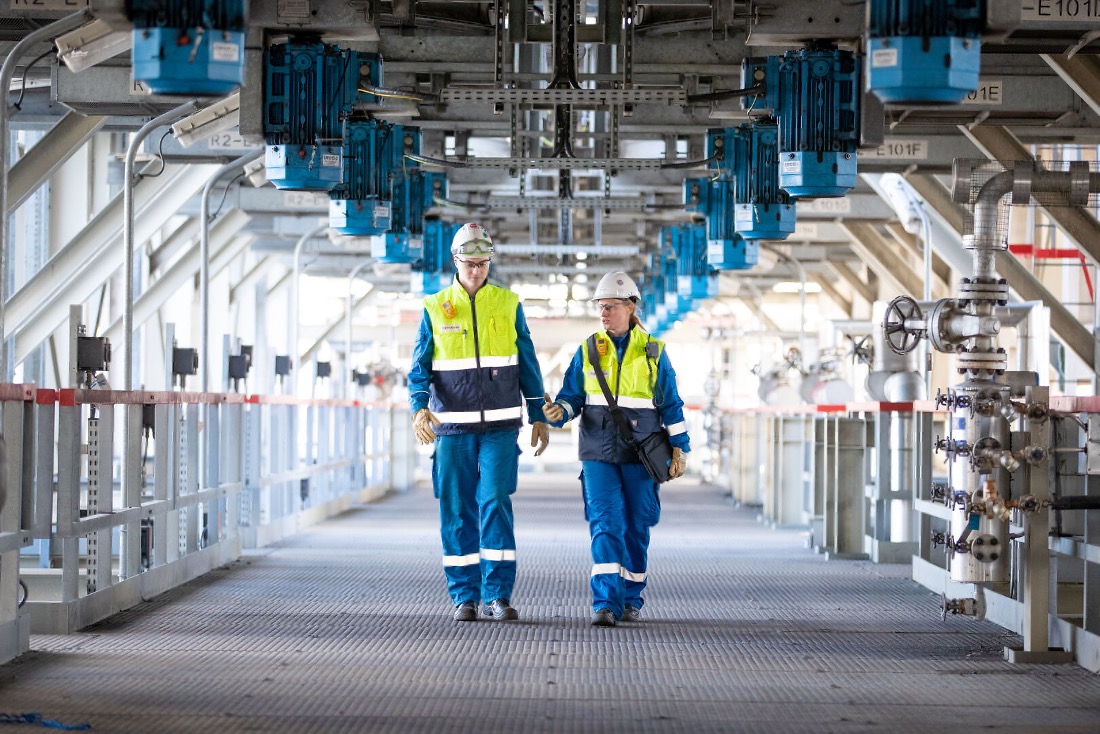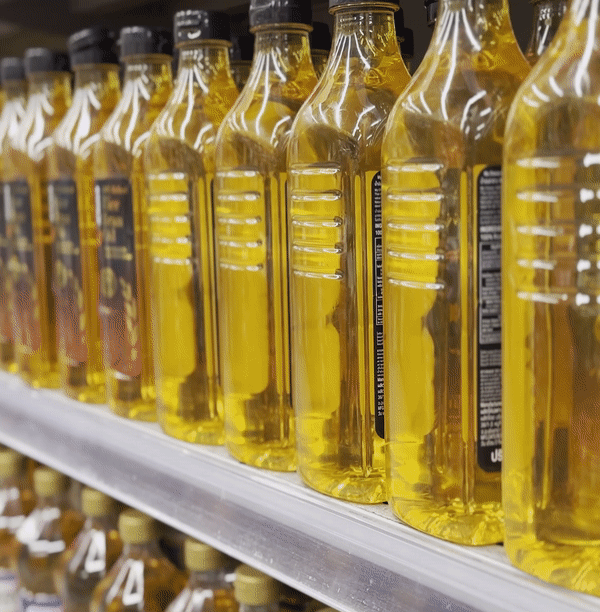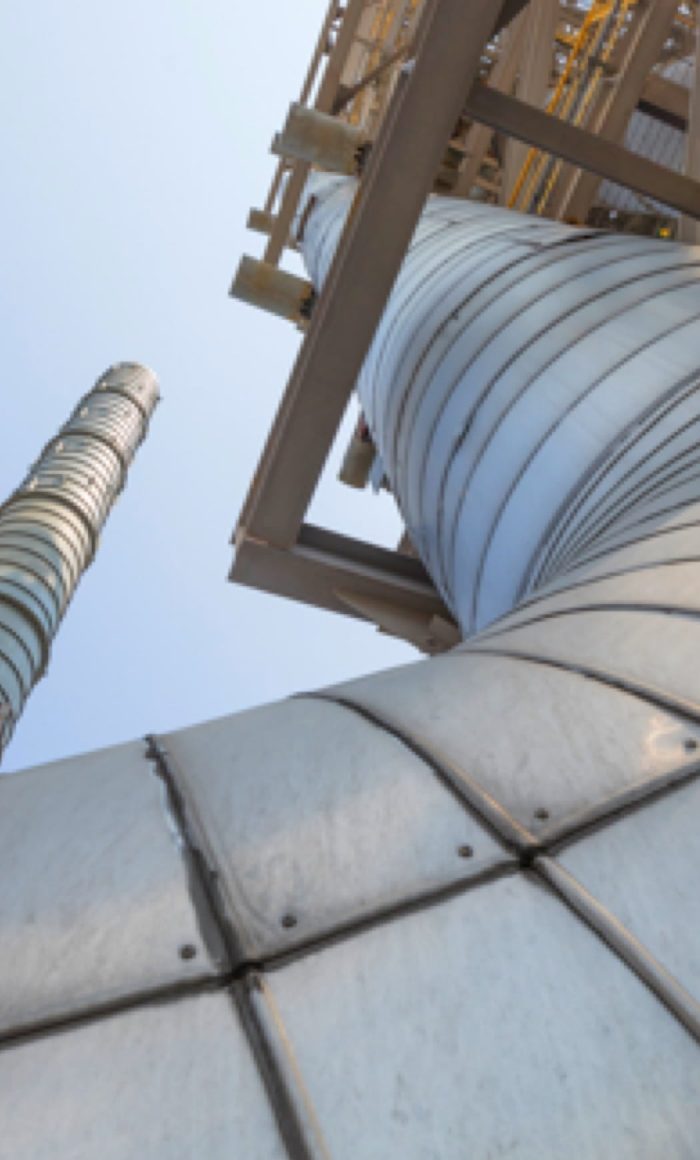Demand for industrial products is expected to grow as economies expand and standards of living rise in the developing world. To meet this demand, the world will need manufacturing solutions that are more energy- and greenhouse gas-efficient than those currently available. Since 2000, ExxonMobil has reduced and avoided nearly 350 million tonnes of its emissions through its energy efficiency and co-generation projects and continues to target research in equipment design, advanced separations, catalysis and process configurations as part of broader efforts to develop energy-efficient manufacturing.
Energy-efficient manufacturing efforts
In India, ExxonMobil worked closely with multinational steel-maker Tata Steel to improve efficiency, which in turn reduced emissions. Tata was producing steel from 14 rolling stands, using a market general grease for lubrication and having to wash it regularly with heavy water sprays to help cool it down. In the washing process, the grease was washed away, leading to 17 bearing failures that each caused 4 to 6 hour delays. Every hour of delay led to a loss of around 50 tonnes of steel production. Tata contacted the Mobil Lubricants Field Engineering Services team, which carried out an investigation into the steel mill’s machinery and its performance failures and recommended a switch to a lithium complex grease. The switch not only reduced bearing failure by 70% and grease consumption by a third, it also enhanced safety and improved its environmental sustainability.
New equipment design may provide a step-change reduction in energy use even in traditional separation processes like distillation. For instance, use of divided wall columns – a concept discovered and developed by ExxonMobil – can combine a series of distillation towers into one, thereby providing significant energy and capital cost savings. Energy savings on the order of 50% were demonstrated at ExxonMobil’s Fawley Refinery in the U.K.1
ExxonMobil scientists and researchers from the Georgia Institute of Technology and Imperial College London are working together on membrane technologies that could reduce carbon dioxide emissions and lower the energy required in refining thermal (distillation) processes. Research results published in the peer-reviewed journal Science2 demonstrate the potential for non-thermal fractionation of light crude oil through a combination of class- and size-based “sorting” of molecules. Initial prototypes have shown that with gasoline and jet fuel they are twice as effective as the most selective commercial membranes in use today.
Life cycle analysis
Life cycle analysis (LCA) is the preferred scientific method to estimate the environmental impact of energy processes and products. It is important to include all emissions across the life cycle of each option when comparing different energy technologies. Every step that emits any type of greenhouse gas must be included to properly estimate the total emissions footprint. This includes emissions associated with production of the resource, conversion and transportation steps, and lastly, consumption of the fuel by the end-user (e.g., in a vehicle or in a power plant).
ExxonMobil has also been working with the MIT Energy Initiative to develop a new LCA tool that covers pathways of multiple technologies representing the majority of greenhouse gas emissions. This tool, called the Sustainable Energy System Analysis Modeling Environment (SESAME3), is based on well-referenced peer-reviewed sources in the public domain and can perform full life cycle analyses for more than 1,000 technology pathways, from primary energy sources to final products or services including those from the power, transportation, industrial and residential sectors.
To have meaningful impact, greenhouse gas mitigation technologies must also be cost-effective. The use of techno-economic analysis (TEA) helps determine the most impactful and cost-effective ways to meet global energy needs while reducing greenhouse gas emissions. TEA also helps to transparently inform policy development.
TEA is currently being added to the SESAME model. Once completed, SESAME will compare both the emissions and costs of energy technologies across all sectors in a system-wide setting. It will be publicly available as a transparent and open-source web tool designed for both experts and general users.
Sources:
1 B. Slade, B. Stober, D. Simpson, Dividing wall column revamp optimises mixed xylenes production, IChemE, Symposium Series No. 152, (2006).2
2 K. Thompson, R. Mathias, D. Kim, J. Kim, N. Rangnekar, J. Johnson, S. Hoy, I. Bechis, A. Tarzia, K. Jelfs, B. McCool, A. Livingston, R. Lively, M. Finn, N-Aryl-linked spirocyclic polymers for membrane separations of complex hydrocarbon mixtures, Science 369 (6501) (2020) 310-315.3
3 E. Gencer, S. Torkamani, I. Miller, T. Wu, F. O’Sullivan, Sustainable energy system analysis modeling environment: analyzing life cycle emissions of the energy transition, Applied Energy 277 (2020) 115550.




